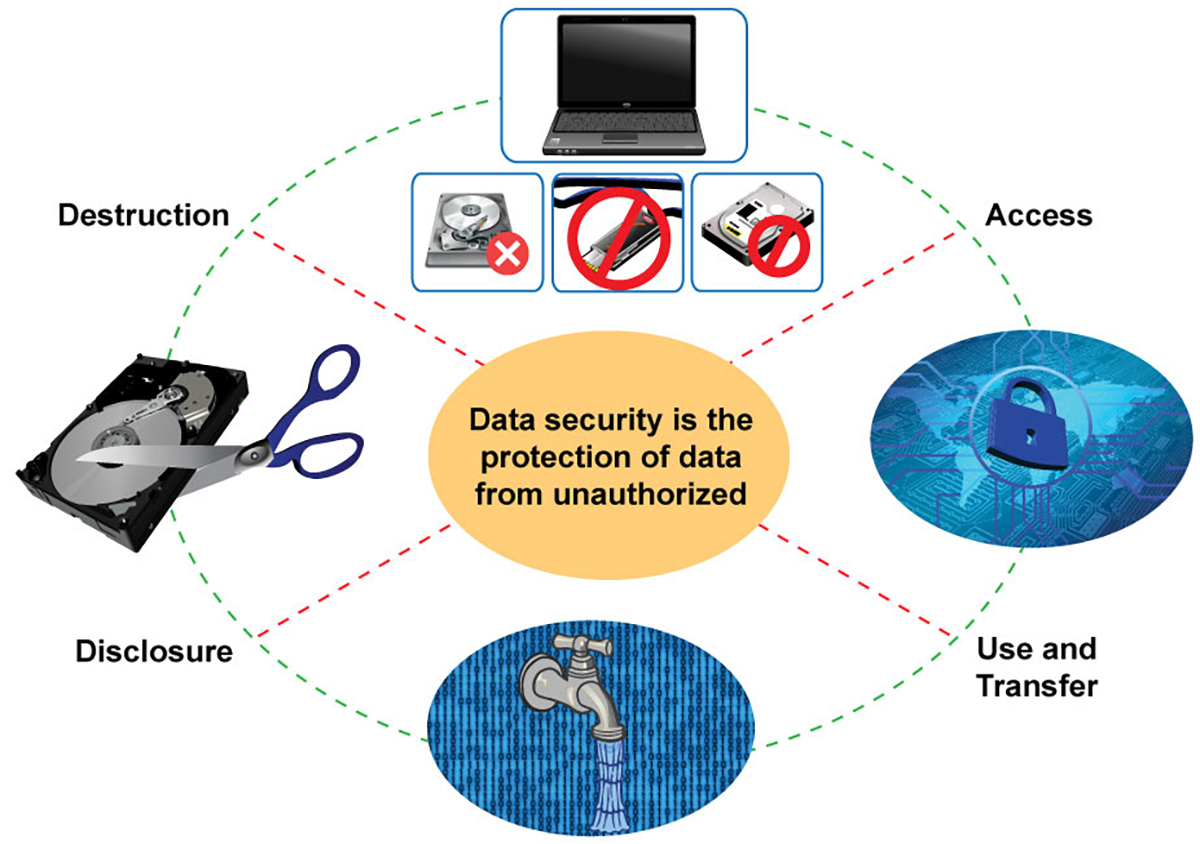The Influence of Effective Data Destruction on Cyber Security Threat Monitoring
The Influence of Effective Data Destruction on Cyber Security Threat Monitoring
Blog Article
The Essential Nature of Data Damage in Upholding Computer Safety And Security Services and Protecting Against Unauthorized Access
In an era where information violations and identification theft are progressively widespread, the significance of reliable information damage can not be overemphasized. Numerous approaches, from data cleaning to physical devastation, serve as critical safeguards versus unauthorized access.
Relevance of Data Destruction
In a significantly digital world, the significance of information damage can not be overstated. As companies collect vast quantities of delicate details, the prospective consequences of failing to correctly manage and dispose of that data end up being progressively severe. Information violations, identification burglary, and business espionage pose substantial risks, underscoring the necessity of efficient data destruction practices.

Additionally, as innovation progresses, so too do the approaches whereby malicious stars seek to manipulate sensitive info. Organizations has to continue to be attentive and positive in their information damage strategies to guard against these developing hazards. By prioritizing information destruction, firms not only secure their possessions but also foster count on amongst customers and stakeholders, demonstrating a commitment to accountable data management and safety methods.
Methods of Effective Data Destruction
To guarantee the total and permanent devastation of delicate information, companies can use a variety of efficient methods customized to their certain requirements. One of the most usual techniques is data wiping, which entails using specialized software application to overwrite existing information numerous times, making recovery practically impossible. This is specifically useful for solid-state drives and hard drives, where conventional deletion techniques are insufficient.
One more efficient strategy is degaussing, which uses strong magnetic fields to interfere with the magnetic domain names on storage space media, making the data irretrievable. This technique is particularly matched for magnetic storage devices, such as disk drive and hard drives.
Physical devastation is likewise a feasible alternative, including the shredding, crushing, or incineration of storage devices. This technique assurances that data can not be recuperated, making it optimal for companies handling very delicate information.
/prod01/channel_3/media/tcd/itservices/images/Untitled-design-(26).png)
Conformity With Data Security Laws
Organizations have to not just concentrate on effective data destruction methods but also guarantee compliance with data defense regulations that control exactly how delicate information is handled and disposed of. Abiding by these regulations is essential for preserving and protecting individual data customer trust fund. Rules such as the General Data Defense Law (GDPR) in the European Union and the Medical Insurance Portability and Liability Act (HIPAA) in the USA impose stringent standards on information management, which consist of needs for the safe disposal of delicate information.
To attain compliance, organizations must carry out thorough data damage policies that align with these lawful structures. This includes identifying data that calls for destruction, developing methods for safe and secure methodsâEUR" such as shredding physical media or utilizing software program that satisfies industry criteria for data wipingâEUR" and preserving thorough records of destruction tasks. Regular audits needs to be carried out to make sure adherence to these policies and to identify any potential areas for enhancement.
Failing to abide by information security guidelines can result in substantial lawful implications, including significant fines and damage to an organization's credibility. Consequently, incorporating compliance into information devastation methods is not just a legal responsibility however also a critical element of a robust info safety and security method.
Consequences of Poor Data Handling
Poor data handling can result in severe effects that prolong past instant functional problems. Organizations may encounter substantial financial losses because of data violations, which commonly anchor lead to expensive remediation initiatives, legal costs, and regulative penalties. These economic ramifications can stress sources and prevent development, inevitably impacting a company's bottom line.
Moreover, poor data handling can badly harm an organization's credibility. Consumers, partners, and stakeholders might shed count on an entity that stops working to safeguard delicate information, bring about lowered customer commitment and potential loss of organization opportunities. This erosion of trust can take years to rebuild, if it can be restored whatsoever.
Furthermore, companies might deal with lawful implications occurring from non-compliance with data protection policies. Such violations may cause examinations and penalties, worsening the monetary problem and further staining the organization's picture.
In the realm of cybersecurity, poor data monitoring methods can produce susceptabilities that make systems more susceptible to unauthorized accessibility and cyberattacks. Eventually, these consequences highlight the vital importance of implementing robust information dealing with treatments to safeguard delicate details and preserve organizational honesty.
Best Practices for Secure Information Disposal


To start with, data must be classified according to its sensitivity. Sensitive information needs extra strenuous disposal methods, such as shredding physical documents and utilizing sophisticated software application for electronic information cleaning. Employing certified information damage solutions makes certain compliance with industry regulations and requirements.
Secondly, organizations should implement an information disposal plan that mandates normal audits. This policy must lay out the treatments for data retention and damage, making certain that obsolete information is thrown away quickly and securely. Educating staff members on these protocols is essential to fostering a society of safety awareness.
Finally, preserving comprehensive records of disposed data improves responsibility and supplies a clear audit route. This documents needs to include the kind of information ruined, the approach used, web and the day of disposal.
Conclusion
In final thought, the critical of efficient information damage is obvious in its role in boosting computer safety and security solutions and mitigating unapproved accessibility threats. Adopting durable approaches such as data cleaning, degaussing, and physical destruction, together with conformity with policies like GDPR and HIPAA, is important for safeguarding delicate info. Overlooking correct data disposal techniques can cause extreme consequences, consisting of information violations and lawful consequences. Applying finest techniques in safe and secure information disposal eventually strengthens organizational stability and customer trust fund.
In an age where information violations and identity burglary are progressively prevalent, the value of reliable like this information devastation can not be overstated. data destruction. Information breaches, identity theft, and company espionage present substantial dangers, highlighting the necessity of reliable data destruction techniques
Conformity with regulations such as GDPR and HIPAA mandates that companies implement rigorous information security procedures, including the protected devastation of data at the end of its lifecycle.
By prioritizing information destruction, firms not just shield their properties yet likewise foster depend on among stakeholders and customers, demonstrating a commitment to responsible data administration and protection practices.
Organizations have to not only focus on efficient information damage methods but also ensure conformity with information security regulations that control how delicate info is handled and disposed of.
Report this page